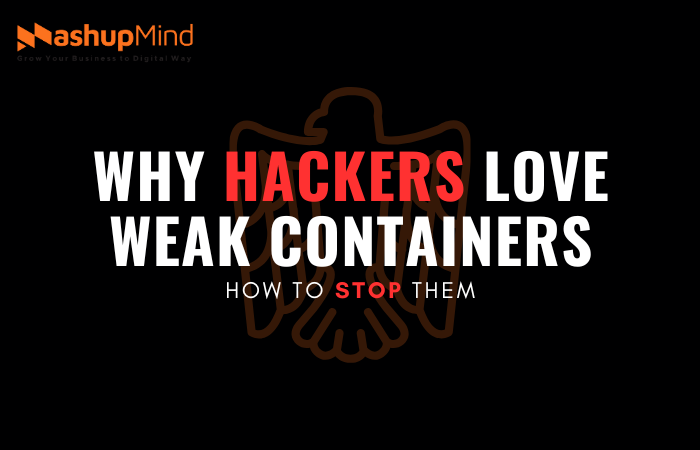What Makes Containers So Popular
Containers are everywhere in modern tech. They let developers package applications with everything needed to run, so the app works the same no matter where it’s deployed. This makes them fast to launch, easy to scale, and simple to move between different environments. Businesses love them because they save time and money, and developers love them because they reduce compatibility issues.
The problem is that their popularity has also caught the attention of hackers. Containers can be a goldmine for attackers, especially when security isn’t handled properly. Weak containers can give hackers a clear path to valuable data or control over systems.
The Hidden Risks Lurking Inside
Many people think container security is just about scanning the image before it’s deployed. While that’s important, it’s far from the whole picture. Even if an image starts out clean, problems can appear once it’s actually running. That’s where container runtime security comes in.
Runtime security focuses on what happens while the container is active. Attackers often wait until a container is running to try injecting malicious code, exploiting vulnerabilities, or escalating their access. If all the security checks happened before deployment, those threats could go completely unnoticed until it’s too late.
Why Hackers Target Weak Containers
Weak containers give attackers several advantages:
They’re often poorly monitored.
Once a container is up and running, some teams assume it’s safe. This lack of monitoring gives attackers more time to operate without being detected.
They may contain outdated components.
If a container is running older software or libraries, hackers can use known vulnerabilities to break in.
They can be misconfigured.
A container with unnecessary permissions, open ports, or weak authentication is much easier to exploit.
They’re widely used in critical systems.
Because containers run important workloads, breaking into one can give an attacker access to sensitive data or even control over an entire service.
For hackers, a weak container is the perfect mix of high value and low resistance.
How Attacks Usually Happen
Most container attacks follow a simple pattern. First, the attacker looks for a vulnerable target—this could be an exposed port, a known software flaw, or a leaked credential. Once inside, the goal is often to move deeper into the system. This might mean stealing sensitive data, installing malicious tools, or spreading the attack to other containers or hosts.
Some attackers also try “cryptojacking,” where they secretly use the container’s resources to mine cryptocurrency. This doesn’t always damage the system directly, but it can slow performance and increase costs while keeping the attacker hidden.
Spotting Trouble in Real Time
The key to stopping these attacks is catching them as they happen, not after the damage is done. This is why runtime monitoring is essential. By tracking system calls, network activity, and process behavior, it’s possible to spot suspicious patterns early.
For example, if a container suddenly starts making network requests it never made before, or if it tries to access files it shouldn’t, that could be a sign of an attack. Runtime security tools can flag these behaviors instantly, giving security teams a chance to act before things get worse.
Strong Configuration as the First Line of Defense
While runtime monitoring is critical, the first step should always be securing the container before it’s deployed. That means:
- Limiting permissions so the container only has access to what it needs.
- Closing unused ports to reduce entry points.
- Using trusted base images from reputable sources.
- Regularly updating software to patch known vulnerabilities.
A well-configured container is much harder to break into, and it reduces the damage an attacker can cause if they do gain access.
The Role of Automation
Manually checking every container is almost impossible, especially for large teams running hundreds or thousands at once. Automated security tools can help by continuously scanning for vulnerabilities, monitoring runtime activity, and applying security policies without human intervention.
Automation also helps make sure nothing gets overlooked. For example, if a new vulnerability is discovered, an automated system can quickly check all containers to see which ones are affected and trigger updates or alerts as needed.
Why Traditional Scanning Isn’t Enough
Static scanning tools check the container image before deployment, which is important but limited. They can’t see what happens during runtime, so they won’t catch an attacker who gets in after launch.
In many cases, attacks happen in ways that can’t be detected by static analysis alone. A piece of malicious code might only activate under certain conditions, or an attacker might gain access by exploiting the container’s interaction with other parts of the system. Without runtime visibility, these threats can remain hidden until they cause serious harm.
Building a Layered Defense
The strongest container security strategies use multiple layers of protection. Pre-deployment scanning, secure configuration, and runtime monitoring all work together to block threats.
Think of it as setting up a home security system. Locking the door (secure configuration) is good, but it’s even better if you also have a camera (runtime monitoring) and an alarm (automated alerts) that goes off if someone tries to break in.
Why This Matters More Than Ever
As more organizations move workloads into containers, the potential rewards for attackers grow. At the same time, containers are often deployed quickly to keep up with development demands, which can lead to security shortcuts.
Hackers know this, and they’re adapting their tactics to exploit any weak points they find. Investing in stronger runtime security isn’t just about protecting a single application—it’s about protecting the entire infrastructure that depends on those containers.
Final Thoughts
Containers are a powerful tool for modern development, but their speed and convenience can come with risks. Hackers target weak containers because they often combine valuable access with poor defenses. Stopping them means using a mix of secure setup, continuous monitoring, and automation to catch threats before they cause damage.
The takeaway is simple: security can’t stop at deployment. It has to keep going for as long as the container is running. That’s how to keep hackers out and data safe.







